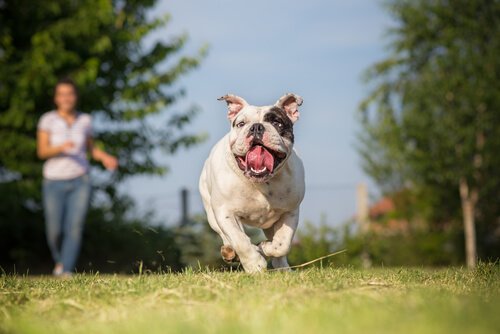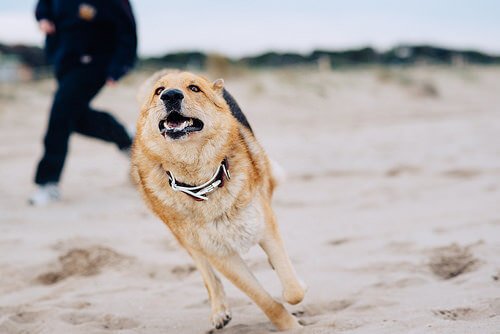Dog Racing Banned in Argentina

In 2016, the bottom-line was positive in Argentina, with renovations taking place on the Buenos Aires Zoo into an eco-park, pets were allowed to travel on the metro, and also dog racing was banned nationwide.
Law draws both support and rejection

The Chamber of Deputies made the initiative into law, which carries a four-year penalty of imprisonment and fines up to 80,000 pesos (around £2,800 or US$3,269.14). This applies to anyone who holds, promotes, or organizes dog racing of any kind. The debate of law continued before the National Congress’s doors by groups in favor and against the proposal.
Throughout the day, protection organizations and greyhound racing defenders gathered at the Argentine legislative palace. At times, there were clashes between the different groups. The law was finally passed with 132 votes in favor, 17 against, and 32 abstentions.
Due to this dog racing ban, animals finalized the year with positive results in regard to gaining rights in Argentina. This achievement followed with the renovation of an eco-park and allowing pets to ride the metro.
Banning dog racing is a step forward for animal rights
2016 will be remembered as the year that many people’s quality of life was affected in Argentina due to the economic measures taken place in Mauricio Macri’s administration. Likewise, it was the year animals began to gain more rights.
Even though there were increased tariffs, unemployment, and sky-high debt and inflation, which is one of the few reasons why some Argentinians seem to feel glad about dogs no longer being exploited by the racing industry. However, now begins the difficult task of complying with the law. Especially, monitoring more than ever that this doesn’t become an underground activity.
A profitable activity for people who harm dogs
Within the arguments laid down to pass the law, was the notion that dog racing is an illegal gambling business. This profitable activity would offer prizes such as:
- 2 bedroom apartments on the Atlantic coast
- Cars
- Motorbikes
- 150 thousand pesos (around £5,300 or US$6189.61)
However, for animal lovers, the matter was related to animal abuse, especially for greyhounds.
The sad life of racing dogs
Activists have been denouncing the hardship of racing dogs for years:
- Doping them to improve their performance. The use of substances such as ephedrine, arsenic, strychnine, and sometimes cocaine.
- Forced mating so females could have up to three puppies per year, instead of two.
- Use of anabolic steroids to gain muscle mass and have more energy during races.
All these practices damage the dog’s heart and kidneys. Therefore, the dog’s average “working” life doesn’t go beyond five years.
A problem that needs to be changed immediately

When dogs no longer perform well in races, they tend to be used for hunting. This is just another ordeal for the dogs. In many other cases they’re murdered or abandoned. The same thing happens to puppies if they don’t think they will be good for racing.
Hopefully with this new law, the terrible exploitation of these dogs begins to change sooner than later. In the meantime, animal activists continue rescuing and helping to give these dogs a new home.
In 2016, the bottom-line was positive in Argentina, with renovations taking place on the Buenos Aires Zoo into an eco-park, pets were allowed to travel on the metro, and also dog racing was banned nationwide.
Law draws both support and rejection

The Chamber of Deputies made the initiative into law, which carries a four-year penalty of imprisonment and fines up to 80,000 pesos (around £2,800 or US$3,269.14). This applies to anyone who holds, promotes, or organizes dog racing of any kind. The debate of law continued before the National Congress’s doors by groups in favor and against the proposal.
Throughout the day, protection organizations and greyhound racing defenders gathered at the Argentine legislative palace. At times, there were clashes between the different groups. The law was finally passed with 132 votes in favor, 17 against, and 32 abstentions.
Due to this dog racing ban, animals finalized the year with positive results in regard to gaining rights in Argentina. This achievement followed with the renovation of an eco-park and allowing pets to ride the metro.
Banning dog racing is a step forward for animal rights
2016 will be remembered as the year that many people’s quality of life was affected in Argentina due to the economic measures taken place in Mauricio Macri’s administration. Likewise, it was the year animals began to gain more rights.
Even though there were increased tariffs, unemployment, and sky-high debt and inflation, which is one of the few reasons why some Argentinians seem to feel glad about dogs no longer being exploited by the racing industry. However, now begins the difficult task of complying with the law. Especially, monitoring more than ever that this doesn’t become an underground activity.
A profitable activity for people who harm dogs
Within the arguments laid down to pass the law, was the notion that dog racing is an illegal gambling business. This profitable activity would offer prizes such as:
- 2 bedroom apartments on the Atlantic coast
- Cars
- Motorbikes
- 150 thousand pesos (around £5,300 or US$6189.61)
However, for animal lovers, the matter was related to animal abuse, especially for greyhounds.
The sad life of racing dogs
Activists have been denouncing the hardship of racing dogs for years:
- Doping them to improve their performance. The use of substances such as ephedrine, arsenic, strychnine, and sometimes cocaine.
- Forced mating so females could have up to three puppies per year, instead of two.
- Use of anabolic steroids to gain muscle mass and have more energy during races.
All these practices damage the dog’s heart and kidneys. Therefore, the dog’s average “working” life doesn’t go beyond five years.
A problem that needs to be changed immediately

When dogs no longer perform well in races, they tend to be used for hunting. This is just another ordeal for the dogs. In many other cases they’re murdered or abandoned. The same thing happens to puppies if they don’t think they will be good for racing.
Hopefully with this new law, the terrible exploitation of these dogs begins to change sooner than later. In the meantime, animal activists continue rescuing and helping to give these dogs a new home.
This text is provided for informational purposes only and does not replace consultation with a professional. If in doubt, consult your specialist.








